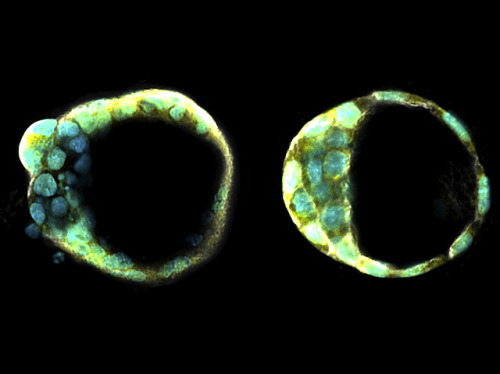
Life’s a Blast
Life begins with limitless potential. Sperm fertilises egg, and the product then divides to form two cells that have the capacity to ultimately develop into any type of cell. This ‘totipotent’ state is tantalising to researchers interested in regenerative medicine, as it could allow the regrowth of any material in the body, but encouraging cells into this super flexible state is hard. When developing cells reach the womb, they have formed a hollow ball structure – a blastocyst with cells destined to form the placenta on the outside, and totipotent cells inside. Now researchers have artificially created a blastocyst-like structure (left, compared to an actual blastocyst, right, stained to highlight DNA and other molecules). Though not yet a perfect replica, it prompted pregnancy-related changes when implanted in a mouse’s womb, raising hopes that it could prove useful for fertility research, and might be a step forward for regenerative medicine.
Written by Anthony Lewis
- Image from work by Cody Kime and colleagues
- Gladstone Institute of Cardiovascular Disease, San Francisco, CA, USA
- Image originally published under a Creative Commons Licence (BY-NC-ND 4.0)
- Published in Stem Cell Reports, August 2019
You can also follow BPoD on Instagram, Twitter and Facebook
Archive link






Комментариев нет:
Отправить комментарий